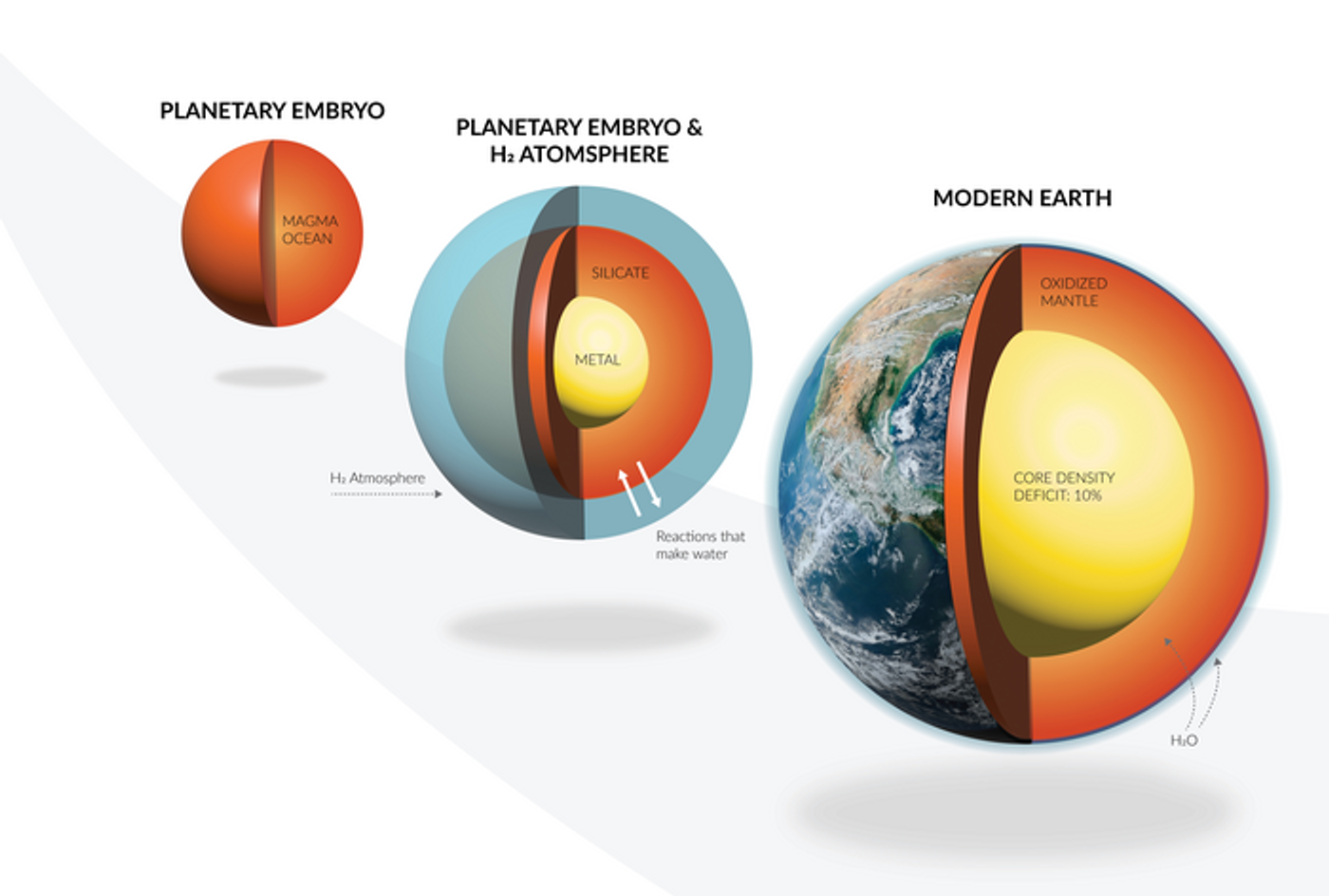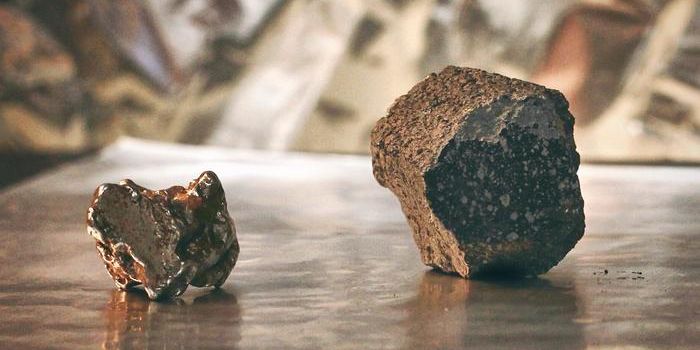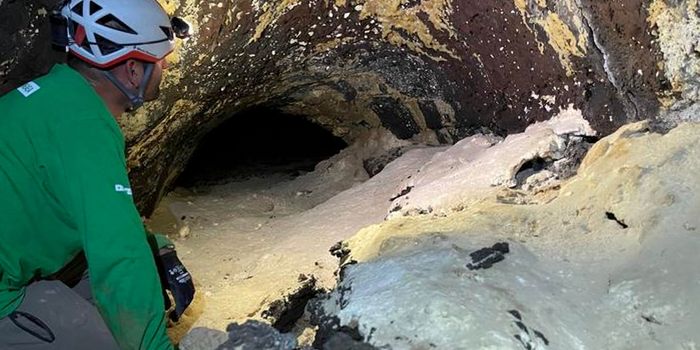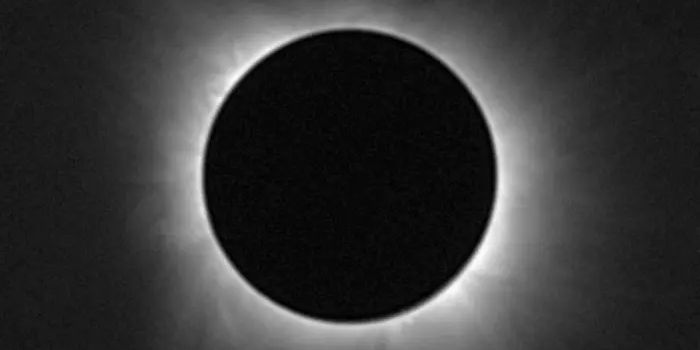Exoplanets Could Teach Us About the Origins of Earth's Water
Where did Earth's water come from? This is what a team of researchers led by the University of California Los Angeles (UCLA) hope to answer as they examined exoplanets to determine how Earth got all its water, which holds the potential to help scientists better understand planetary formation and evolution. Prior to the discovery of exoplanets in the 1990s, scientists were constrained to building models of Earth’s formation and evolution through our own solar system.
Artist illustration showing evolution and the interactions between the hydrogen atmosphere and the final result of liquid water. (Credit: Illustration by Edward Young/UCLA and Katherine Cain/Carnegie Institution for Science)
“Exoplanet discoveries have given us a much greater appreciation of how common it is for just-formed planets to be surrounded by atmospheres that are rich in molecular hydrogen, H2, during their first several million years of growth,” said Dr. Anat Shahar, who is a Staff Scientist & Associate Science Deputy at Carnegie Science, and a co-author on the study. “Eventually these hydrogen envelopes dissipate, but they leave their fingerprints on the young planet’s composition.”
For the study, the researchers built mathematical model simulations to observe the interaction between atmospheres containing molecular hydrogen and the magma oceans residing within the planet using 25 different compounds and 18 different types of reactions to simulate the formation of the Earth. The simulations not only revealed exchanges of large amounts of hydrogen into the metal-rich core and increased oxygen of the mantle, but also the creation of large amounts of water, as well.
“This is just one possible explanation for our planet’s evolution, but one that would establish an important link between Earth’s formation history and the most common exoplanets that have been discovered orbiting distant stars, which are called Super-Earths and sub-Neptunes,” said Dr. Shahar.
The study comprised a small part of the Dr. Shahar-led AEThER project, which involves multiple disciplines and institutions, with the goal of helping scientists better understand the chemical compositions of Super-Earths and sub-Neptunes, along with developing the necessary foundation for finding life on worlds outside of Earth. With funding from the Alfred P. Sloan Foundation, this study is one of many designed to allow scientists to better locate true biosignatures on other worlds from molecules in the atmospheres that might not be of biological origin.
“Increasingly powerful telescopes are enabling astronomers to understand the compositions of exoplanet atmospheres in never-before-seen detail,” said Dr. Shahar. “AEThER’s work will inform their observations with experimental and modeling data that, we hope, will lead to a foolproof method for detecting signs of life on other worlds.”
What new discoveries will scientists make about exoplanets and planetary atmospheres in the coming years and decades? Only time will tell, and this is why we science!
Sources: Nature, EurekAlert!
As always, keep doing science & keep looking up!









